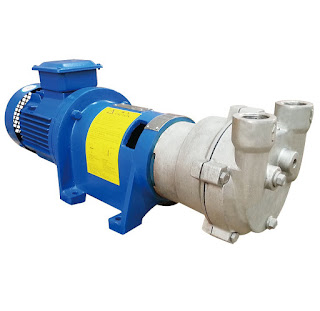Furnace shell is usually cooled by water or air
The pressure in the chamber of a vacuum furnace can be pumped into an industrial furnace below atmospheric pressure. Vacuum furnace is electrically heated, the surface of the workpiece heated is not oxidized, decarbonized, small deformation and good mechanical properties. It is advantageous to remove impurities by smelting metal in vacuum furnace. The finished product has fewer pinholes, smaller segregation and good quality. Vacuum furnaces are suitable for the smelting and heating of high quality, high purity and refractory metals, such as tungsten, molybdenum, tantalum, niobium, titanium, heat resistant alloy steels and magnetic materials, electrical materials, high strength steels, stainless steel, tool steels, die steels, etc.
Vacuum furnaces appeared around the 1930s. In 1927, the vacuum annealing furnace for electrical materials was made in the United States. In 1953, vacuum consumable arc furnace was used to smelt titanium sponge in industry. Vacuum induction furnaces have been widely used in industry around the 1950s. Oil quenching vacuum furnace was developed in 1960 in the United States.
Vacuum furnace is generally composed of furnace, electric heating device, sealed furnace shell, vacuum system, power supply system and temperature control system. Sealing furnace shell is welded with carbon steel or stainless steel, and the joint surface of removable parts is sealed with vacuum sealing material. In order to prevent the shell from deforming and sealing material from deteriorating after heating, the shell is usually cooled by water or gas. The furnace is located in a sealed shell. According to the use of the furnace, there are different types of heating elements in the furnace, such as resistance, induction coil, electrodes and electronic guns. The vacuum furnace for smelting metals is equipped with crucibles, and some are equipped with automatic pouring devices and manipulators for loading and unloading materials. The vacuum system is mainly composed of vacuum pump, vacuum valve and vacuum meter.
Vacuum furnaces are divided into vacuum resistance furnaces, vacuum induction furnaces, vacuum arc furnaces, vacuum consumable arc furnaces, electron beam furnaces (also known as electron bombardment furnaces) and plasma furnaces.
After shutdown of the vacuum quenching furnace, the vacuum in the furnace should be kept below 66.5 LPA.
When the furnace is dusty or unclean, use alcohol or gasoline soaked silk cloth to wipe clean and dry it.
When disassembling and assembling parts such as sealing structure and vacuum system on the furnace body, clean them with alcohol or gasoline and dry them, then coat them with vacuum grease and assemble them.
The outside surface of vacuum quenching furnace is often wiped, and its operation is clean and clean.
Parts and parts trucks need to be cleaned and dried before they can enter the furnace to prevent moisture and dirt from entering the furnace.
When each transmission part finds the phenomenon of clamping, inaccurate limit and control failure, it should queue up immediately, and do not operate forcefully, so as to avoid damaging the machine parts. The mechanical transmission parts of spot welding machine for aluminium sheet should be regularly refuelled or replaced for maintenance.
Vacuum pumps, valves, measuring instruments, thermal instrumentation, electrical components and other accessories are maintained and maintained according to the technical specifications of the products.
Maintenance operation should be carried out in case of power failure. In the case of live maintenance, we must ensure the absolute safety of people and equipment. The content of the article comes from the internet. If you have any questions, please contact us.
Refractory Metal Intermediate Compound Powder Heating And Sintering
Vacuum Hot Sintering Pressure Furnace
Commonly Used Refractory Materials
Reasonable Selection Of Heat-Resistant Steel Members




评论
发表评论